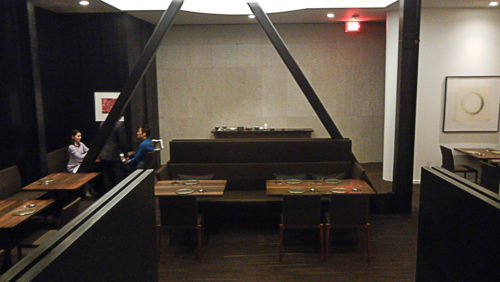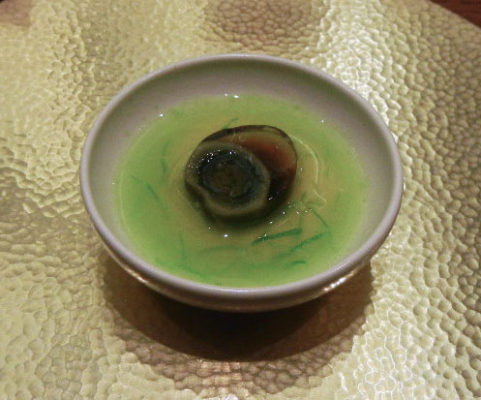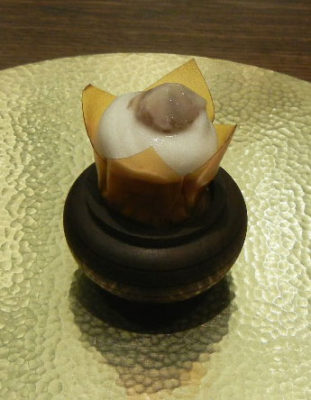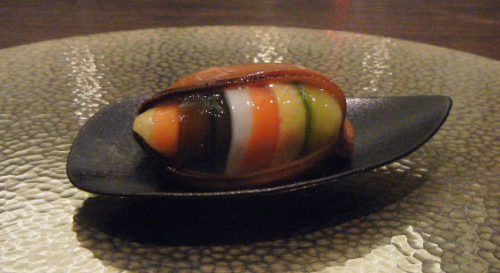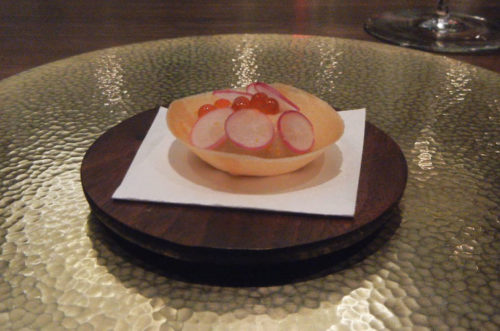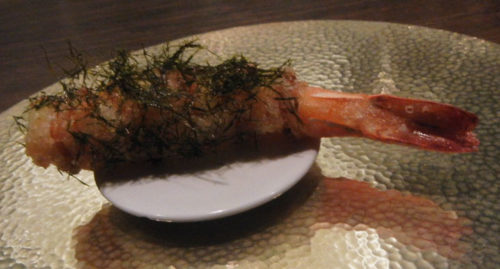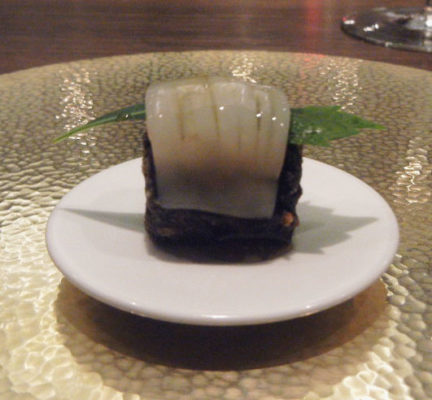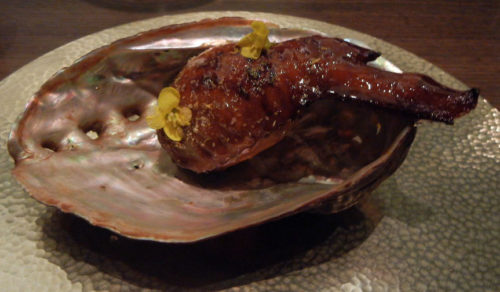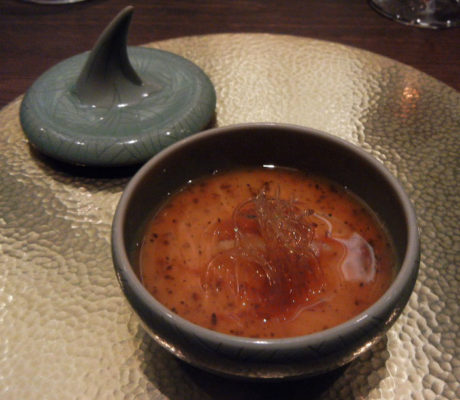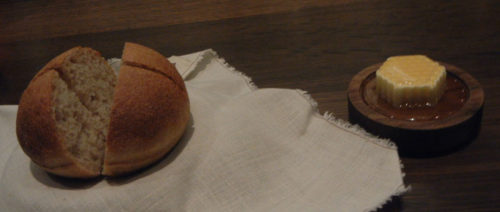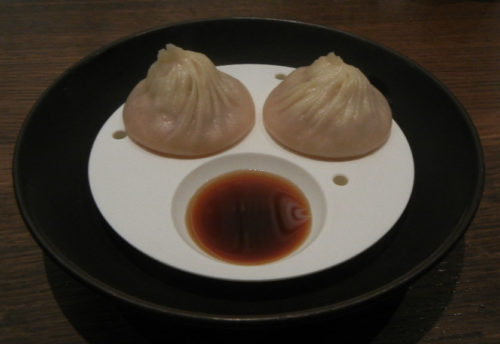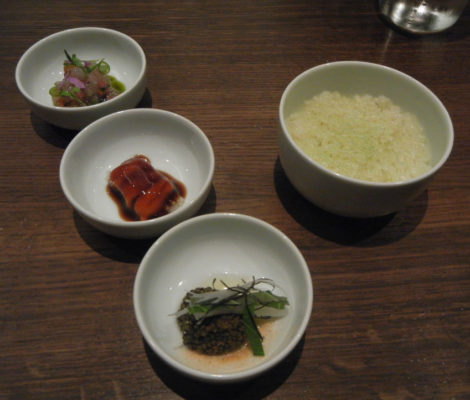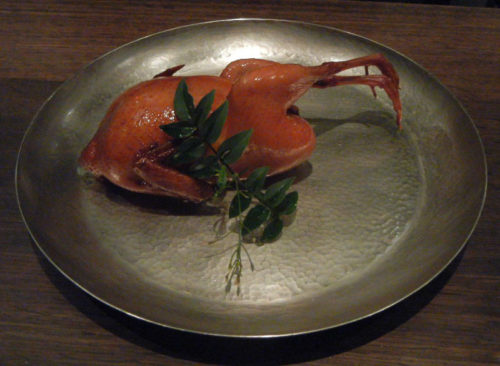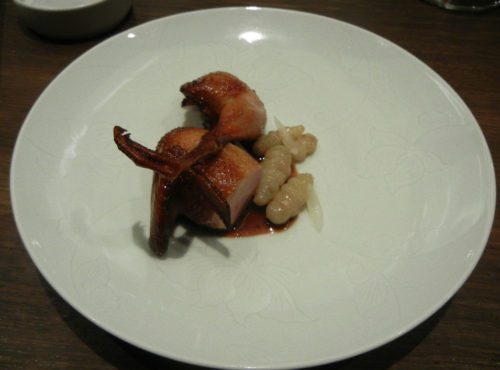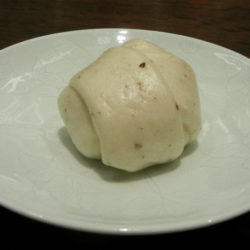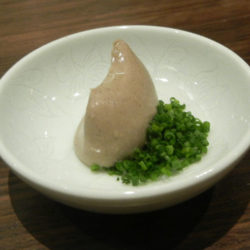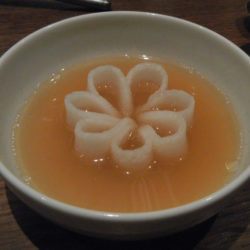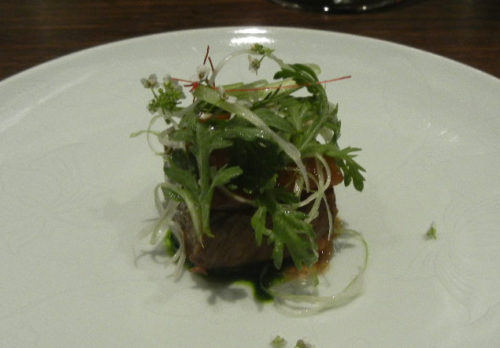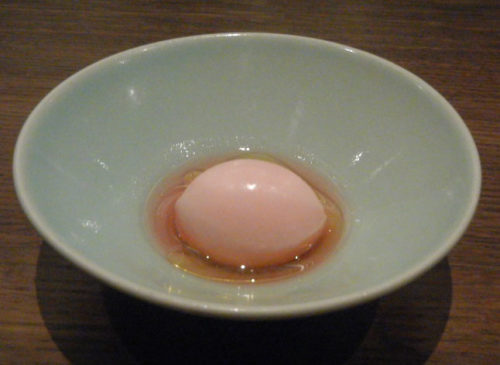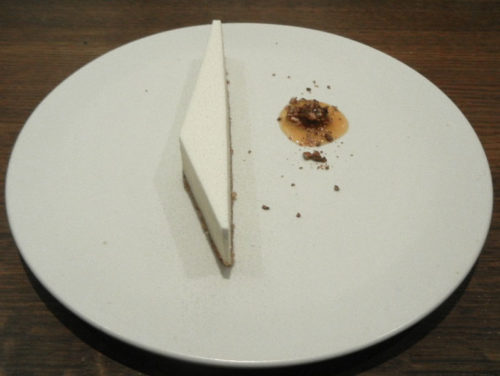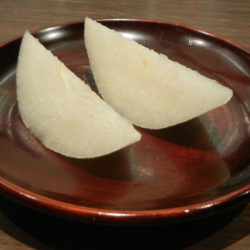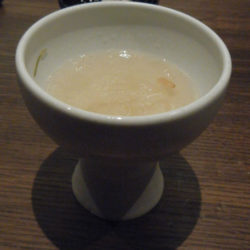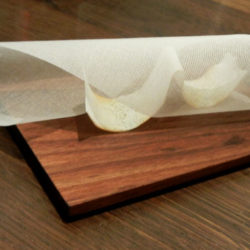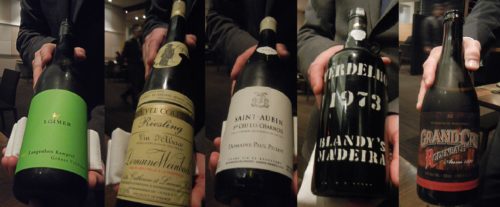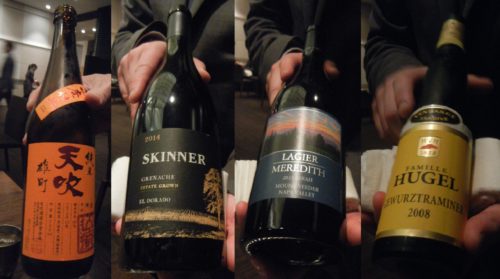Benu
22 Hawthorne St.
San Francisco, CA 94105
(415) 685-4860
Website
For more than a hundred years, the Michelin guide is hailed as the dining authority throughout Europe. In 2005, they expanded their reach and crossed the Atlantic to the United States in to New York City. A year later the San Francisco and the Bay Area edition was published bestowing its highest accolades to only one restaurant, Thomas Keller’s French Laundry in Yountville. Unfortunately, San Francisco failed to impress the Michelin inspector. For eight long years it waited for a restaurant worthy of the third star, then finally in 2014 a pair of two stars was elevated to three.
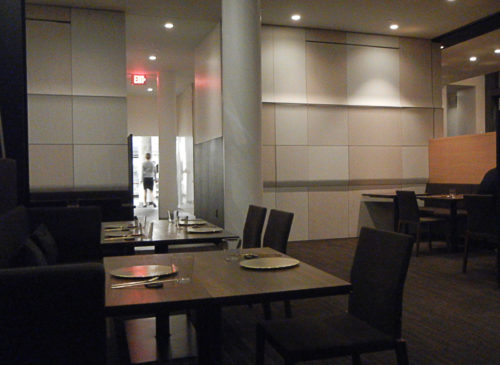 Benu is one of the four restaurants with three stars currently in San Francisco. Its head chef and owner Korean born Corey Lee, is a product of Thomas Keller kitchen. He held the sous chef position at the French Laundry, and was one of the opening chef of Per Se in New York. His extensive resume included stints at Michelin starred establishment such as Guy Savoy in Paris, Pied a Terre, Pierre Koffman in London and Daniel in New York. He opened Benu in 2010 in the Financial District and immediately received two Michelin stars, and eventually attaining the third star in 2014. Along with Saison, they were the first in San Francisco to accomplish this feat.
Benu is one of the four restaurants with three stars currently in San Francisco. Its head chef and owner Korean born Corey Lee, is a product of Thomas Keller kitchen. He held the sous chef position at the French Laundry, and was one of the opening chef of Per Se in New York. His extensive resume included stints at Michelin starred establishment such as Guy Savoy in Paris, Pied a Terre, Pierre Koffman in London and Daniel in New York. He opened Benu in 2010 in the Financial District and immediately received two Michelin stars, and eventually attaining the third star in 2014. Along with Saison, they were the first in San Francisco to accomplish this feat.
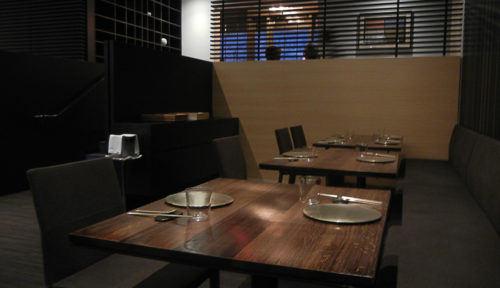 The restaurant is tucked in a historic building accessible through a courtyard. Its kitchen are visible through large windows from Hawthorne Street. Benu’s main dining room has tall ceilings, soft lighting, and uncovered dark oak tables paired with thick padded chairs that are tightly spaced from each other. The interior is minimalist with plenty of black, white and dark gray colors. There is no bar or lounge, only a waiting area by the entrance. And directly behind the hostess desk is a smaller dining area that looks down on main dining room.
The restaurant is tucked in a historic building accessible through a courtyard. Its kitchen are visible through large windows from Hawthorne Street. Benu’s main dining room has tall ceilings, soft lighting, and uncovered dark oak tables paired with thick padded chairs that are tightly spaced from each other. The interior is minimalist with plenty of black, white and dark gray colors. There is no bar or lounge, only a waiting area by the entrance. And directly behind the hostess desk is a smaller dining area that looks down on main dining room.
There was only one dining option at Benu, a tasting menu priced at $295. The meal started with “small delicacies” beginning with a Chinese specialty called the thousand year old quail egg which has a delightful cured saltiness. While its sauce provided a terrific rich element to it. Next was the oyster, pork belly kimchi served in warm and cold temperature with a tongue pleasing hint of kimchi fieriness. The marinated mussel stuffed with glass noodles has a sweetness that managed to fittingly blend with the mussel deep sea brininess.
A tart of buttery monkfish liver with trout roe and radish was next. Perfectly complementing the monkfish liver were the bitterness from the thinly slice radishes. That was followed by the prawn wrapped in jelly fish with comte sea weed, fresh off the fryer and served burning hot. The meaty prawn was tasty and the wrapping of jelly fish and seaweed added a beautiful crispy texture. Then came the blood sausage with squid and sesame leaf. By adding squid and sesame leaf, not only gave the homely blood sausage a certain refinement but also created an interesting mixture of flavors that works together.
Grilled chicken wing stuffed with abalone liver was marinated in soy sauce for a wonderful salty sweetness and the abalone liver stuffing was a pure joy. The shark fin pho with truffles and crab was not actually made with shark fin, instead the restaurant used Jinhua ham, crabs and other ingredients to replicate it,. The pho was prepared very well with a nice subtleness paired with sharp notes of truffle. Then came bread course, freshly baked sprouted grain bread served warm and accompanied with orange blossom honey infused ginseng butter.
First course, is the restaurant signature dish lobster coral xiao long bao with homemade soy sauce and vinegar. At first bite, the xiao long bao was oozing with tremendous amount of robust flavors, which is eventually followed by delectable filling of lobster roe. Dipping it in homemade soy sauce and vinegar adds a sublime mixture of salty and sour.
Next course came in threes and served all at once with a bowl of high quality white rice from Japan. The caviar with hand-pressed sesame oil, sesame leaf and daikon has a superb subtle salinity, the sea urchin marinated in fermented crab sauce, thinly sliced kohlrabi was full of buttery goodness and the lightly-cured mackerel, fresh ginger, sake lees pickles has an excellent clean pickle taste and light spiciness to it.
The meal continued with the barbecued quail, Chinese artichoke with red cabbage and black truffle sauce, double bouillon of quail with mountain yam. Whole barbecued quail was shown to the table before the server brought it back to the kitchen and prepared. The quail meat was tender, juicy, and nicely flavored with truffle sauce (that also worked well with the mountain yam on the plate). Served on the side, was an amazing steamed truffle bun with a delightful truffle cream. Another addition was the savory quail stock with mountain yam. In this course the kitchen resourcefully used the three main ingredients to create different dishes.
Beef rib braise in pear, daikon cooked in beef jus, scallion and chrysanthemum salad were the last of the savory plates. The scrumptious rib was superbly done with very good textures and flavors which was ascended by the pears sweetness.
The “Omija and olive oil” made from a Korean berry has a soothing bitterness that refreshes the palate. Dessert of Neufchatel cheesecake, dry-aged persimmon and cocoa nibs was a refined version of the cheese cake yet not as rich. Honeyed persimmon sauce with cocoa was cleverly use as a sweetener. Surprisingly, this was the only dessert in this particular evening. To end the meal were Shinko pear, sweet rice cake, a fantastic chilled rice tea and a toasted mint.
At Benu, the tasting menu of fourteen or so small courses were served in different paces. The “small delicacies” in the beginning were brought out in rapid succession while the other courses arrived in a slower manner. This was an impressive dinner that showcased highly technical cookery, and perfectly executed food with sophisticated Asian flavors. There were traditional Asian dishes that were brilliantly recreated and refined. Beverage pairing was designed by Master Sommelier, Yoon Ha (one of only two hundred fifty master sommelier in the world) priced at $210 and comprised of eight glasses of wines, beer and sake. It also include a pour of Blandy’s 1973 Verdelho retailed at $220. The pairing rightfully complements the different flavor elements of each dish.
Though the restaurant had a relaxing vibe, it still had the fine dining finesse and professionalism. Its young staff worked the dining room impeccably. They were well-trained, full of energy, and polite. Service was particularly attentive yet not overbearing. The chefs that also served the food were equally oriented and friendly as the servers.
Wine Pairing:
Dinner here is pricey and to many it’s a once in a life time experience. The complete meal with wine pairing plus tax and service charge makes Benu one of the most expensive restaurant in America. What justifies the high price tag is a dining experience that can be easily be the finest any one can ever have.
After leaving the confines of the French Laundry, Chef Lee became one of America’s top toque and flourished as a restaurateur. In addition to Benu, he also has the one Michelin star In Situ and the French bistro Monseiur Benjamin. All three restaurants were a success in their own rights. But his flagship Benu, is a special San Francisco dining destination and is among the preeminent restaurant currently in the country.

